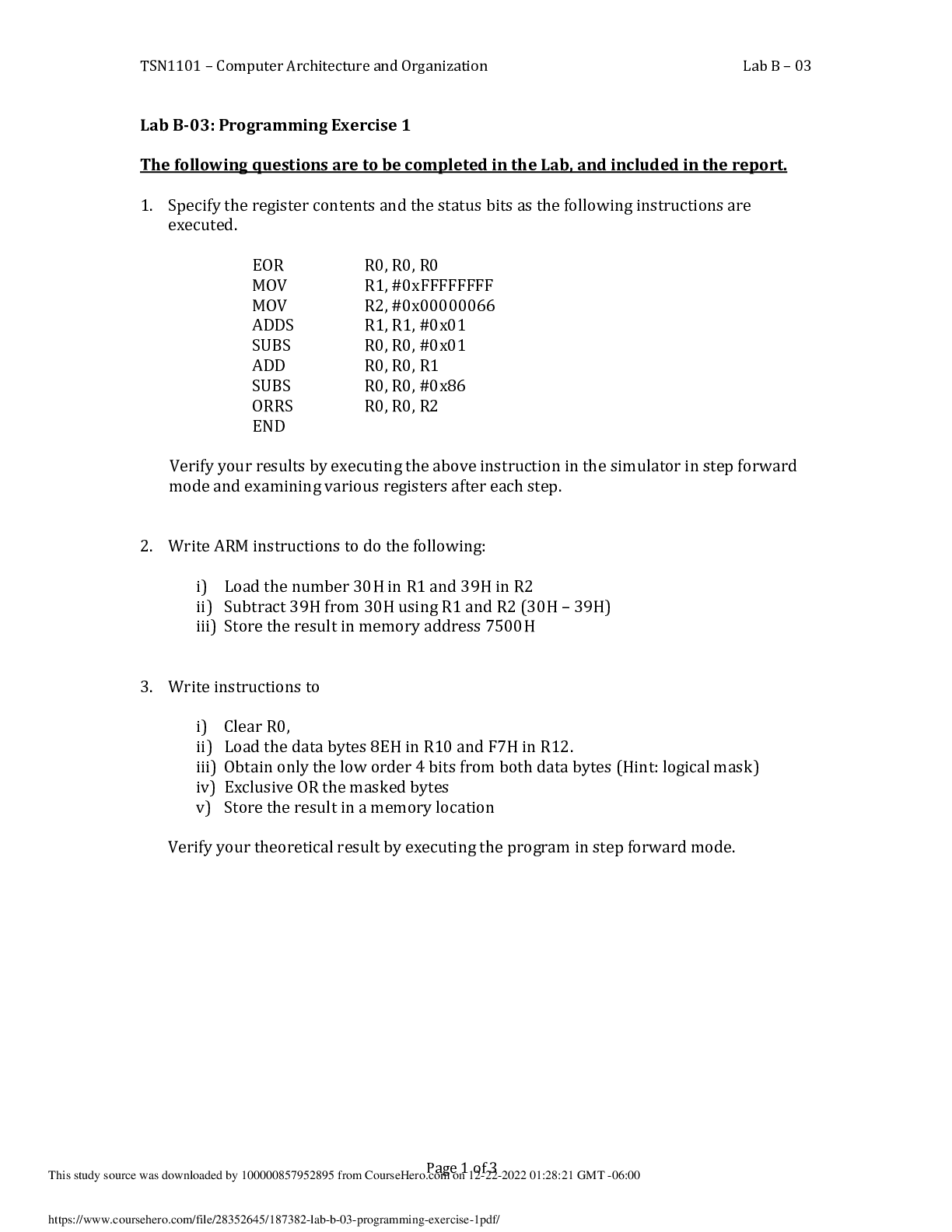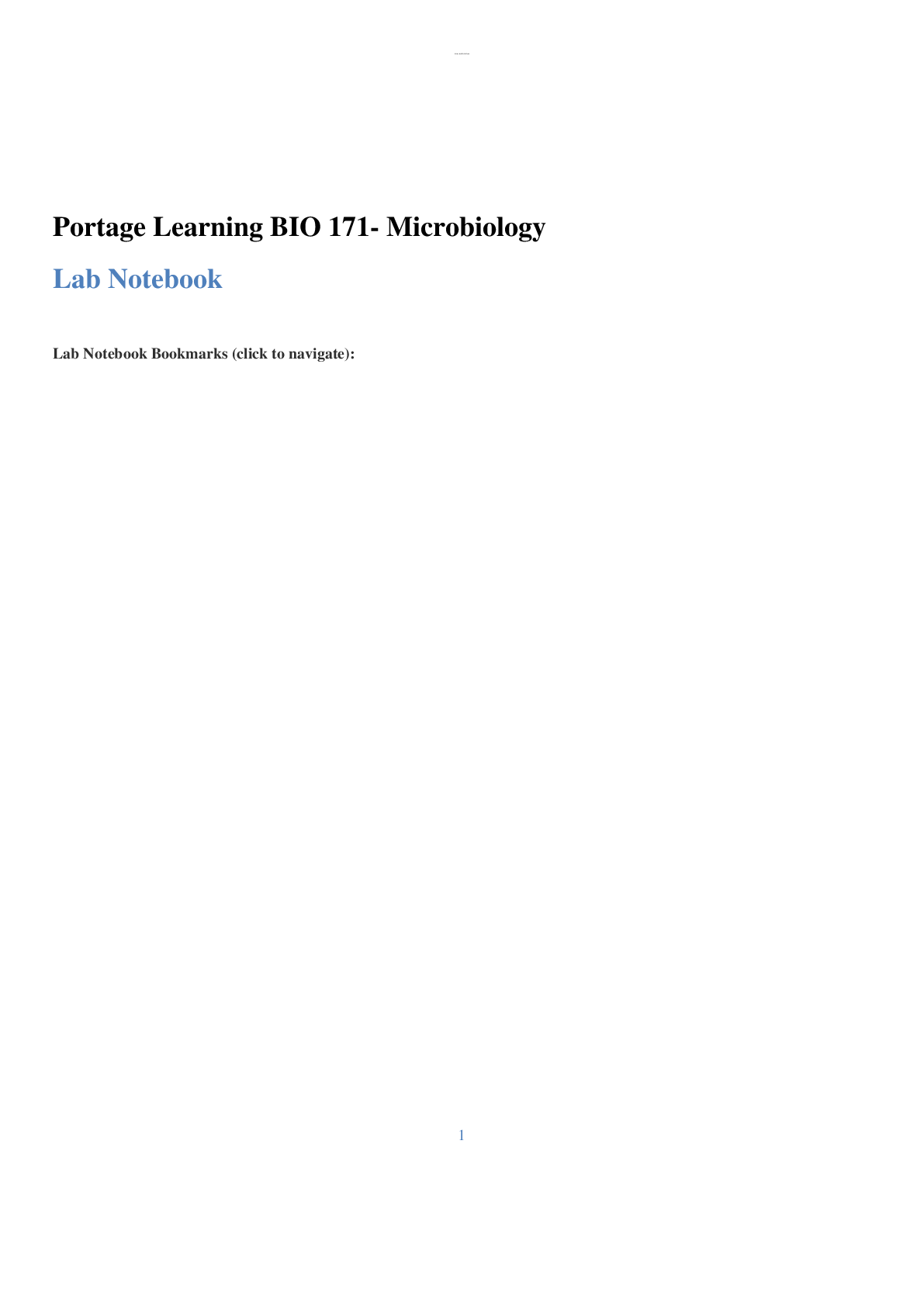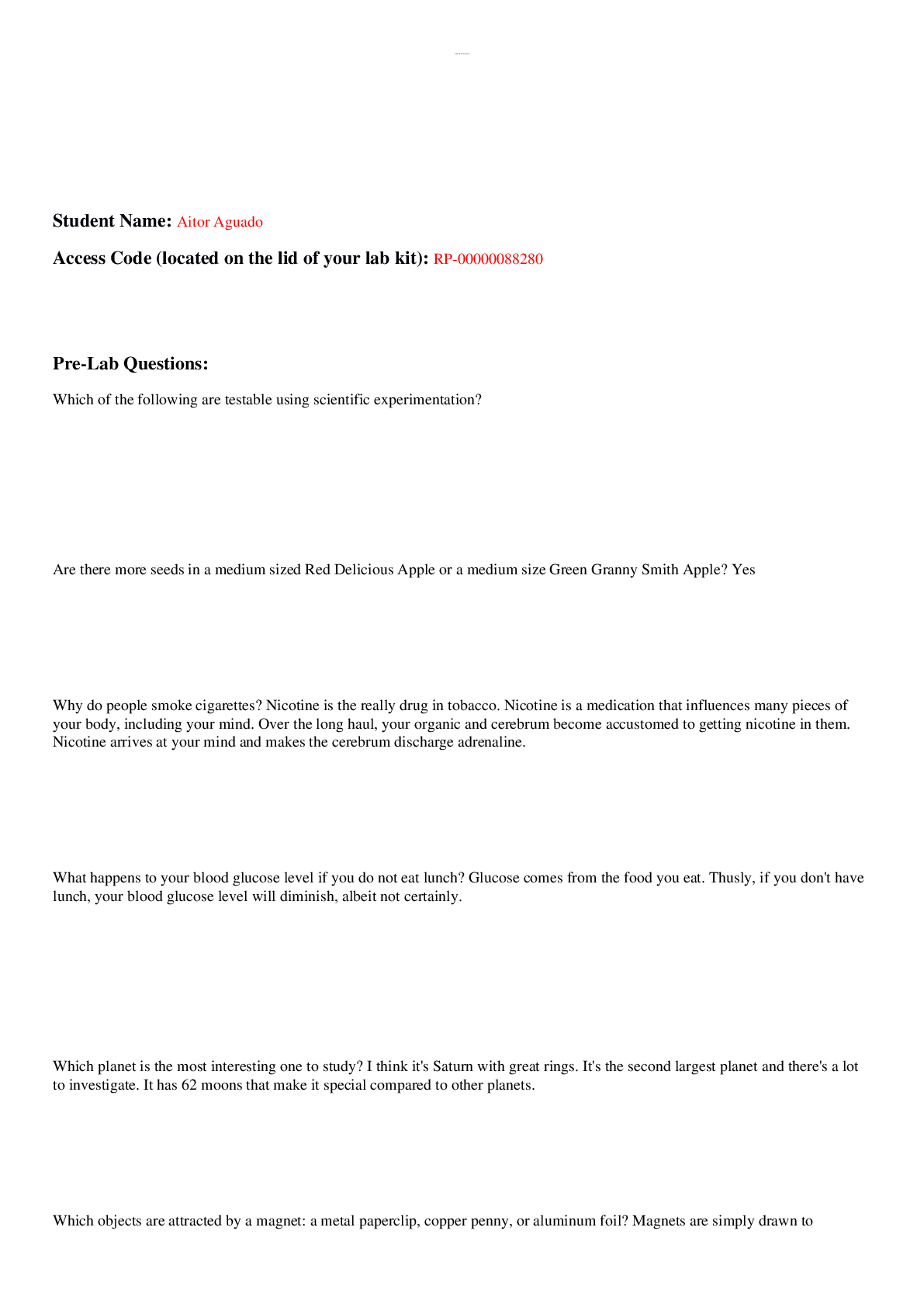Biology > Lab Experiment > ANT 3514C – Introduction to Biological Anthropology Lab 2: Mendelian Heredity (All)
ANT 3514C – Introduction to Biological Anthropology Lab 2: Mendelian Heredity
Document Content and Description Below
ANT 3514C – Introduction to Biological Anthropology Lab 2: Mendelian Heredity Summer C 2019 Lab Objectives: 1. Assess the role of Mendelian inheritance in maintaining biological variation 2. In ... fer potential genotypes when presented with information about a phenotype 3. Contrast genotype with phenotype and understand their roles in evolution 4. Understand and solve Punnett squares and pedigrees. Lab Activity: Mendelian Baby Game & Personal Genetic Survey (Modified From: Dr. Laura Greer Vick, Peace College) Purpose: To illustrate how Mendelian inheritance maintains variation in a population. As Charles Darwin developed his theory of Natural Selection during the 1840s and 1850s, he was troubled by a major inconsistency that he was at a loss to explain. He recognized that the fact of variation – that all individuals in a species are not identical – could play a vital role in determining differential reproductive success among individuals as their environments shifted. But the maintenance of variation, the very stuff on which natural selection is able to act, through multiple generations was not clear to him. In particular, variation seemed doomed to disappear over time either through the effects of blending inheritance or due to natural selection itself. In the mid-19th century there was no conception of the molecular level of inheritance. The reigning reproductive theory at the time believed that a general ‘formative force’ acted on the vital fluids of organisms to produce more advanced organisms. It was generally believed that offspring were created through a rudimentary blending of these fluids in two mating organisms. Darwin attempted to formulate a theory of reproduction, known as pangenesis, which posited that every cell in the body contributed minute particles he named gemmules to the production of offspring. However, this idea still did not get around blending inheritance. If organisms tended to become more and more blended together over time, how could they maintain variants? Darwin did not have an answer. Furthermore, his theory of natural selection itself deemed that some variants would be more successful than others, leading to the nonrandom elimination of some variation. If natural selection worked in the way Darwin claimed it did, it would be reducing the very raw material it needed in order to cause evolution. Unbeknownst to Darwin and biologists in general at the time, rules of heredity that did not rely on blending inheritance and that allowed for the maintenance of variants through multiple generations had already been proposed in 1866. Gregor Mendel’s principles of segregation and independent assortment indicated that some traits are discontinuous, or discrete, and cannot blend over the course of several generations. Furthermore, his breeding experiments with multiple generations of pea plants showed that rare variants that seemed to disappear from one generation could reappear in later generations. It was the fusion of Mendel’s principles of inheritance with Darwin’s theory that culminated in “The Modern Synthesis” of the mid-20th century, and laid the groundwork for the modern science of biology. The purpose of this lab is to 1 illustrate how some basic discrete traits are inherited and how sexual reproduction maintains variation within populations during each generation. Instructions: Congratulations! You have just been hired as the newest genetic engineer at Mendelian Babies! The mission of this company is to aid in the natural conception of beautiful, healthy infants by insuring that only the most compatible genetic materials are combined. It is your job to match mothers-to-be with one of the available sperm donors to give them the best probability of having babies with the traits they desire. You must first complete the job training and then you can be matched with potential mothers-to-be and create the perfect offspring! Genetic Engineer Training (3.25 pts): 1. Blood Type: Three alleles, A, B, and O, may contribute to an individual’s blood type. Alleles A and B are dominant over O, but neither is dominant over the other – a case of co-dominance. For example, an individual with blood type O has a geno [Show More]
Last updated: 2 years ago
Preview 1 out of 10 pages

Buy this document to get the full access instantly
Instant Download Access after purchase
Buy NowInstant download
We Accept:

Reviews( 0 )
$7.00
Can't find what you want? Try our AI powered Search
Document information
Connected school, study & course
About the document
Uploaded On
Jan 30, 2023
Number of pages
10
Written in
All
Additional information
This document has been written for:
Uploaded
Jan 30, 2023
Downloads
0
Views
170

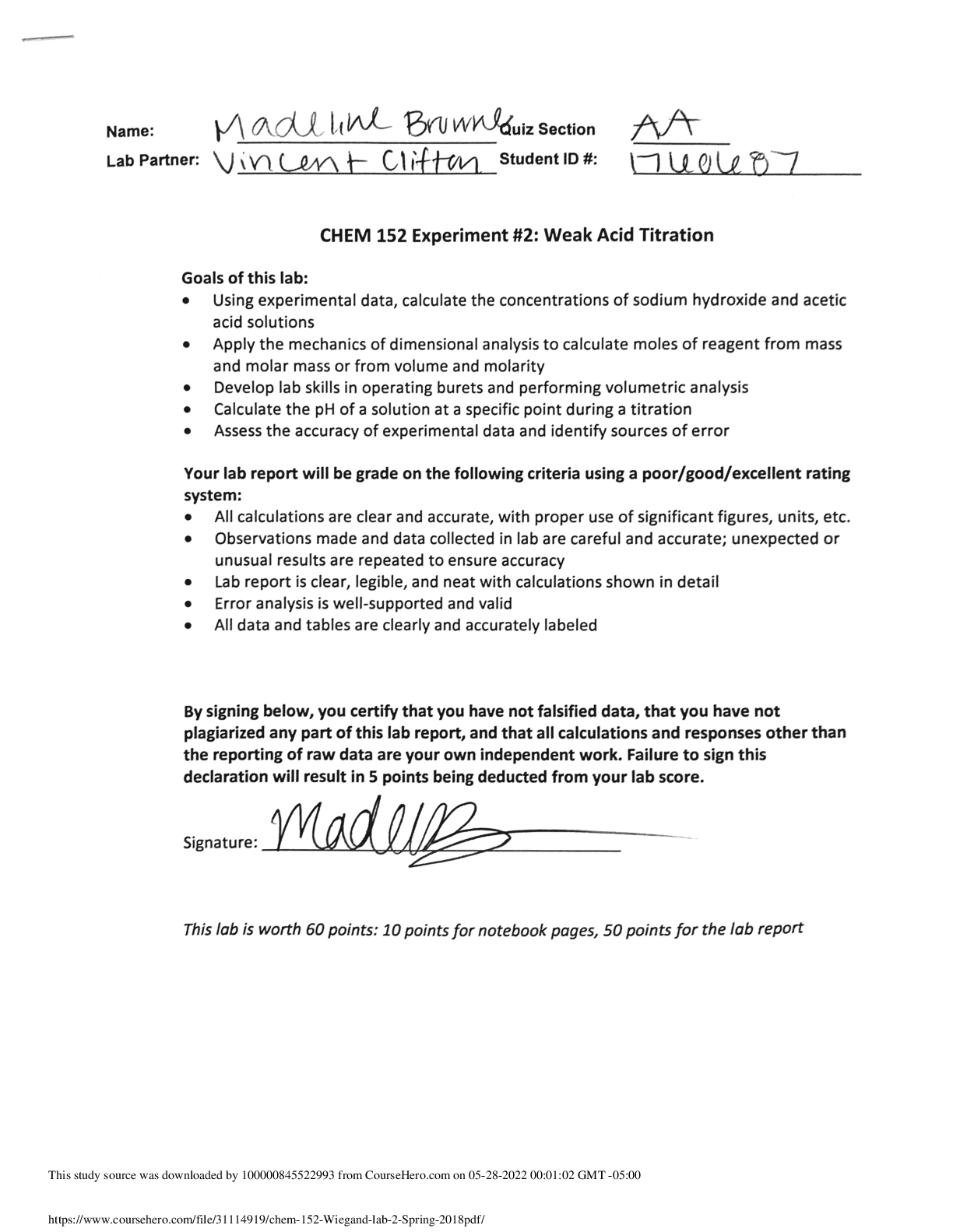
.png)
.png)
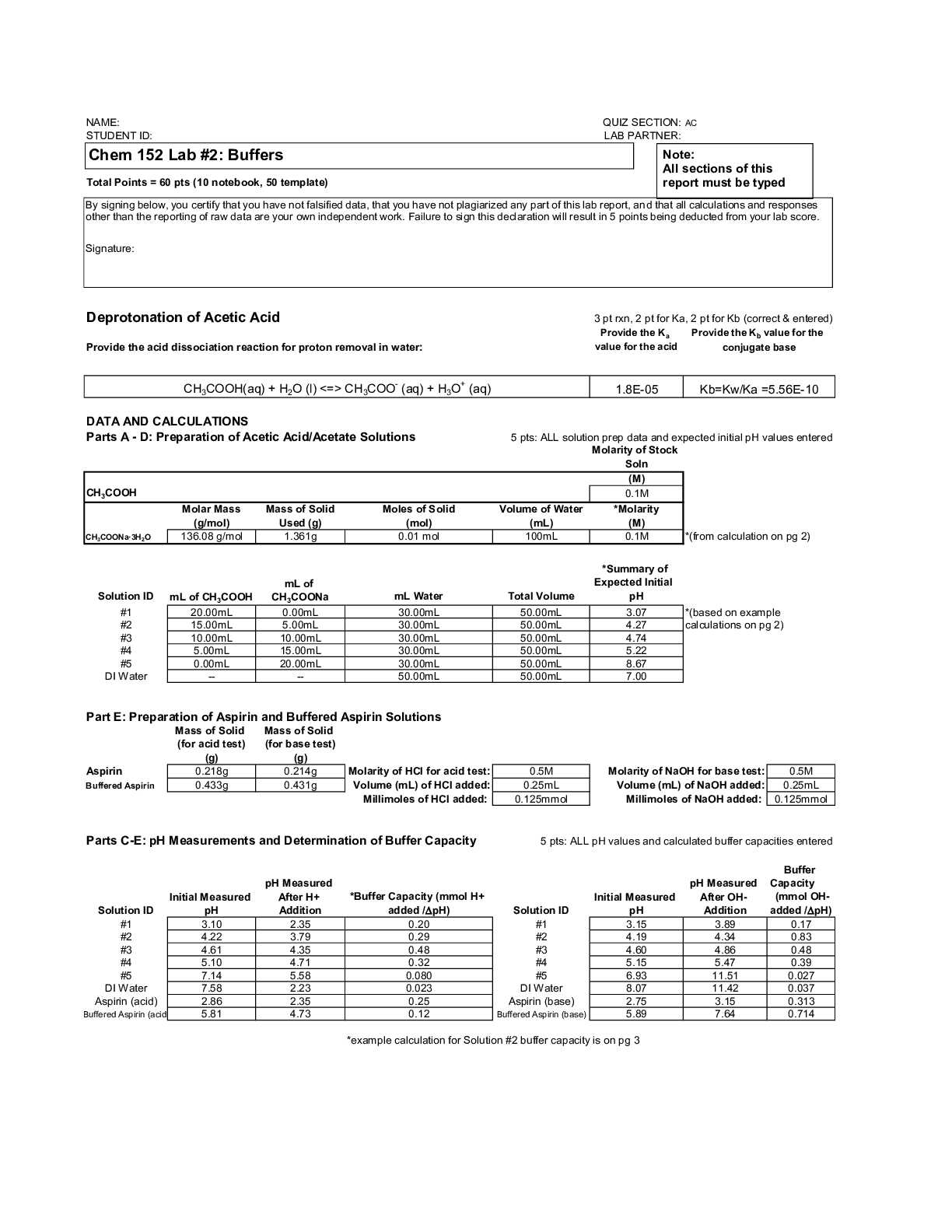
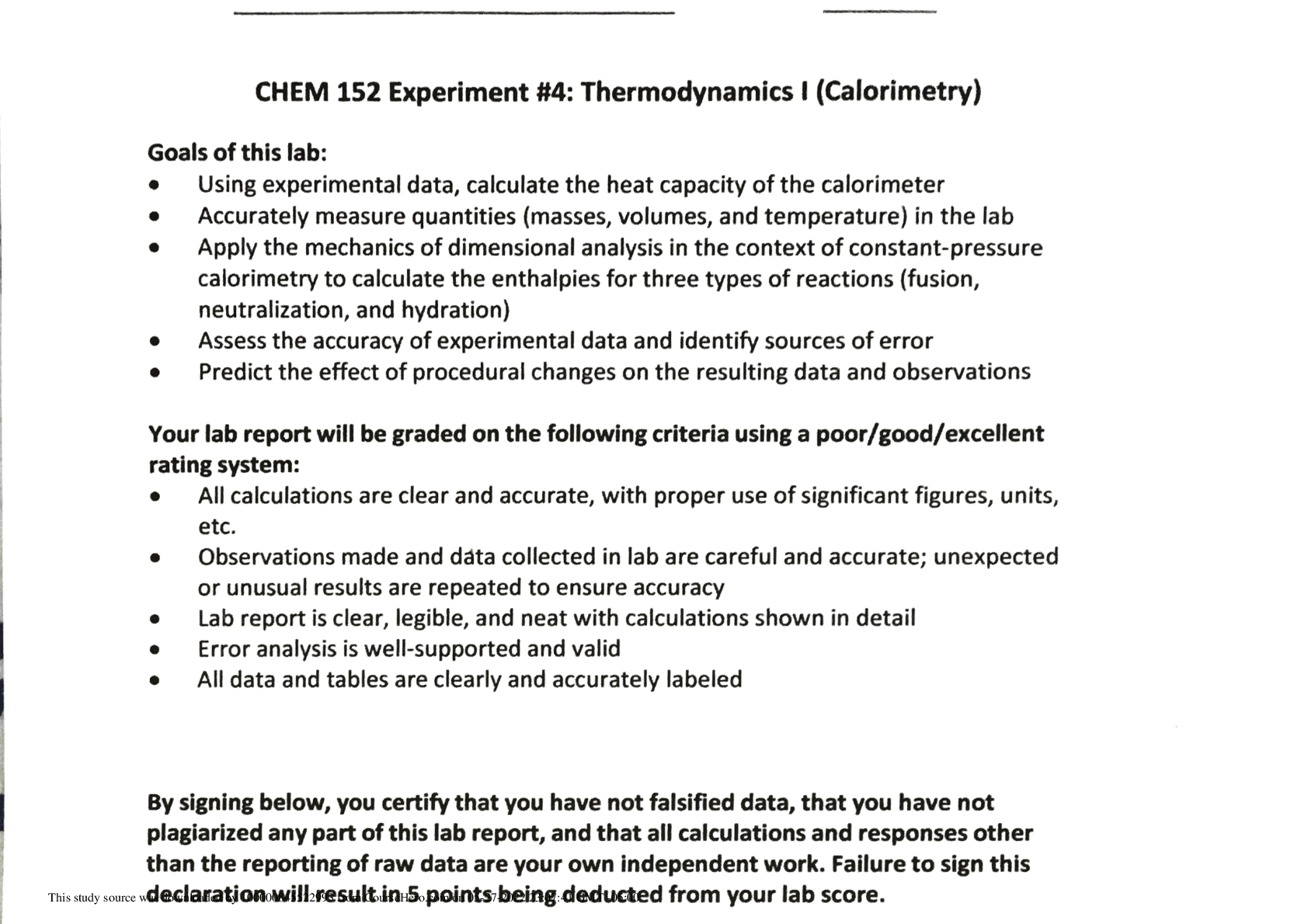
.png)
.png)

